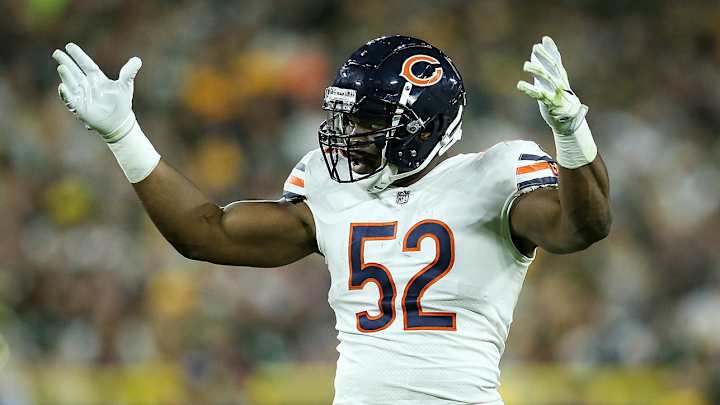ESPN Hopes to Boost Monday Night Football with More Mic'd Up Players, Amplified Sound

You know Monday Night Football broadcasters Lisa Salters, Booger McFarland, Joe Tessitore, Jason Witten. But during Bears-Seahawks on Sept. 17, fans will also listen to Chicago edge rusher Khalil Mack. There’s a decent chance they’ll hear Seattle linebacker Shaquem Griffin too.
This was a busy offseason for MNF. Facing flagging ratings, the pressure was on for ESPN executives to rebuild their announcer booth. But, somehow, that hiring process wasn’t top priority all spring for lead producer Jay Rothman. “Forget about rebuilding our team,” he says. “Honestly our number one point of emphasis was enhancing the audio presentation.”
Rothman and MNF coordinating director Chip Dean studied other sports’ broadcasts and felt the NFL telecasts could be getting viewers closer to the action. In June, they sat down with league counterparts and expressed their vision. “No disrespect to the NFL, but I brought them examples of what Major League Baseball has done with its audio, what the NBA has done, and how the NFL is behind,” Rothman says. The league was open to ideas, and the results were audible—if sometimes NSFW—during MNF’s grand re-opening last week in Oakland.
Subtle, sure, but noticeable enough for me to reach out to Rothman last week, wondering what had changed behind the scenes. Boom mics now patrol both sidelines, picking up audio from the benches. Commentators are expected to stay quiet in certain situations. Maybe most significantly, the team is aggressively amplifying player audio above the crowd sound. And for the first time since ESPN showed Sunday Night Football around the turn of the century, it has purchased access to a player mic after the league cut the price by ⅔ following the summer meeting. Mack will be mic’d up tonight during Bears-Seahawks.
Two notes: (1) Any player mic audio MNF wants to use first has to be approved by an NFL Films employee, and no foul language or strategy talk is allowed on-air. (2) The game-callers could “lay out” a little more often if they wanted to give fans the full post-play effect, as is clear in both of the above clips.
The changes are certainly not going to eradicate the negative noise around ESPN’s flagship program. I don’t think any of the people that have walked away from the NFL entirely are going to tune back in to hear some on-field chatter. I don’t think Rothman or Dean expect any to, either. But there is a different target demo here that could be swayed, if only slightly.
Look at the ratings for Week 1 in the NFL. The Sunday afternoon windows saw ratings increases while the primetime numbers sagged again. Could be a one-week fluke—we’ll have more evidence very soon—or that divergence could point towards a growing population that watches their favorite team but doesn’t follow the wider league. (The fact that FOX’s national, late-afternoon window was flat year-over-year fits that theory.)
In response, the primetime production crews are trying to make their games events. I could write a whole other story about the pop music FOX is using on Thursday nights in place of the more classic tracks it employs on Sundays. ESPN, meanwhile, is mic’ing up players and sending McFarland to the sideline in a lofted chair on wheels to make their matchups look, feel and sound bigger. Along the way, they’re getting diehard fans slightly closer to the stars.
